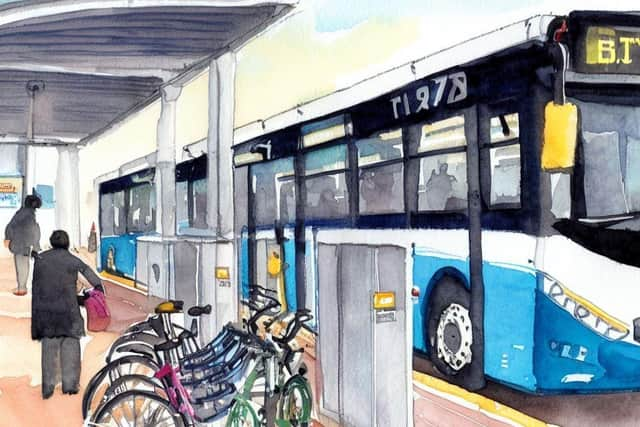Opinion: Why Forth Valley needs to look at transport and economy issues without delay
and live on Freeview channel 276
There has been a lot of transport investment benefitting the Forth Valley in recent years. Following the reopening of the Stirling to Alloa line, railways serving Stirling, Falkirk, and Clackmannanshire were electrified, and now have high-quality, modern trains. The Clackmannanshire Bridge and completion of the M80 have made access by road easier too.
But there’s a snag. It’s quick and easy to move in and out of the region, but moving between its communities is harder, especially for people without easy access to a car.
Advertisement
Hide AdAdvertisement
Hide AdTake, for example, a 19-year-old student who lives in Camelon and doesn’t own a car. Let’s say she studies at Forth Valley College and is transferring to the University of Stirling. She also has a part-time supermarket job. Her bus pass enables free travel between work and college, but she often feels unsafe waiting longer for a bus after the late shifts she does to fit around her timetable. She would cycle, but the roads are busy. Travel to the university isn’t much easier. Trains to Stirling are fast, but her bus pass isn’t valid, and costs soon add up. The alternative is a long bus journey, making it impossible to juggle her shifts and lectures.


The Forth Valley Connectivity Commission was established to examine transport challenges just like the ones she faces. Its mission was to suggest how Clackmannanshire, Falkirk, and Stirling Councils might collaborate to improve transport in the region. Commissioners heard evidence from those involved in transport, planning, healthcare, and other regional voices.
Its final report, published this week, calls for three ‘big moves’ that would transform the region’s transport and improve quality of life for its people. Each will take years to deliver, but meaningful improvements can be achieved quickly.
The starting point is to stop taking planning decisions that make providing good services for everyone difficult. It’s time to stop building new homes, supermarkets and public facilities where they are difficult or even impossible to reach without a car.
Advertisement
Hide AdAdvertisement
Hide AdInstead, the region should focus on improving its urban centres, transforming Alloa, Falkirk, and Stirling from outdated, car-dominated places into more vibrant service hubs with high-quality housing.
Transport can help achieve this, but only if we plan for the future. Environmental commitments mean we will have to use our cars less, and other modes of transport more.
The region’s geography means that active travel is an option for many journeys, but a reinvigorated bus network would make the biggest difference. The report argues that the three councils should work together to develop a regional bus rapid transit system, with key routes served by high-quality vehicles running in dedicated lanes. This will take time, but work can be started on better buses and less congested routes straight away.
These solutions would benefit our student, and many others. With regular, fast services, she could travel confidently, while segregated cycle lanes would mean that the final mile home feels safe enough to bike. And she would now more easily balance studying with her job.
Advertisement
Hide AdAdvertisement
Hide AdThis situation is typical of many in Falkirk and the Forth Valley. Working together, the region’s three councils could use better transport and connectivity to improve quality of life for everyone.
You can read the whole report here